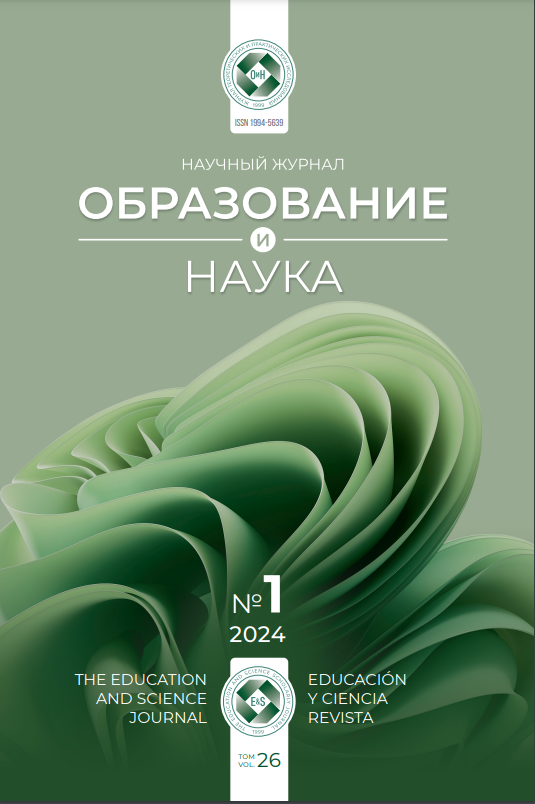
The Education and Science Journal
SCHOLARLY JOURNAL
The Education and Science Journal aims to objectively represent the results of fundamental and applied research in educational science, thereby stimulating scholarly discussions around pedagogical and psychological topics relevant to Russian and foreign researchers.
The Education and Science Journal was founded in 1999 under the auspices of the Ural Branch of the Russian Academy of Education. Since 2012, the Journal has been published and distributed by the Russian State Vocational Pedagogical University.
The Journal publishes original research by Russian and foreign scholars across a wide range of fields related to educational development.
JOURNAL SUBJECT HEADINGS:
- PROBLEMS OF METHODOLOGY
- GENERAL EDUCATION ISSUES
- PROFESSIONAL EDUCATION
- EDUCATION MANAGEMENT
- PSYCHOLOGICAL RESEARCH IN EDUCATION
- SOCIOLOGICAL RESEARCH IN EDUCATION
- ASPECTS OF HEALTH CARE IN EDUCATION
- INFORMATION TECHNOLOGIES IN EDUCATION
- DISCUSSIONS
- CONSULTATIONS
Target audience: community of researchers focusing on psychological and pedagogical issues in education (researchers, decision-makers, managers, administrators, post-graduate and undergraduate students).
The mission of the Education and Science Journal is to maintain a common information space in Pedagogical Sciences, thus encouraging fundamental and applied research as well as the transfer of results into practice.
Priorities of the Journal:
- comprehensive, objective, timely and independent dissemination of information among the target audience on topical findings in educational science;
- stimulation of discursive interaction throughout the professional community.
The Editorial Board of the Journal applies the principles of scientific rigour, objectivity, professionalism, information support for the most significant specialist research and respect for standards of publishing ethics.
The journal accepts articles for publication in the following speciality areas:
Pedagogical Sciences
Psychological Sciences
The journal will consider research material from any author irrespective of place of residence, nationality or academic qualification so long as the material presented has not been previously published and is not simultaneously submitted for publication in other journals.
The acceptance of articles for publication takes place on a rolling basis.
Information about the position of the publication in the SCIENCE INDEX rating is available on the website of the Electronic Scientific Library of the Russian Federation (www.elibrary.ru, section – thematic subject authority; subsection 14.00.00. Journal "Education and Science") - http://elibrary.ru/title_profile.asp?id=9597.
The journal has the international standard periodic print media serial number ISSN 1994-5639. On the basis of concordat with the Scientific Electronic Library (www.elibrary.ru), full-text materials of the journal are indexed in the Russian Science Citation Index (RSCI) electronic database since 2003.
The journal is listed in the RF Ministry of Science and Education catalogue of peer-reviewed academic journals and publications of principal scientific findings of dissertations. The journal is indexed in the European Reference Index for the Humanities and Social Sciences (ERIH PLUS). The Education and Science Journal is indexed in Scopus database (J 521). The journal is included in Emerging Sources Citation Index (WOS), Clarivate Analitycs
Current issue
METHODOLOGY PROBLEMS
GENERAL EDUCATION
PSYCHOLOGICAL RESEARCH IN EDUCATION
SOCIOLOGICAL RESEARCH IN EDUCATION
INFORMATION TECHNOLOGIES IN EDUCATION
Announcements
2016-03-02
Subscribtion to the Education and Science Journal
The Editorship does not engage in the distribution of printed copies of the issues of the journal.
You have an opportunity to subscribe to the Education and Science Journal in order to receive a printed copy of the edition via the JSC Agency Rospechat.
It is possible to subscribe at a post office or on the Internet.
| More Announcements... |





































